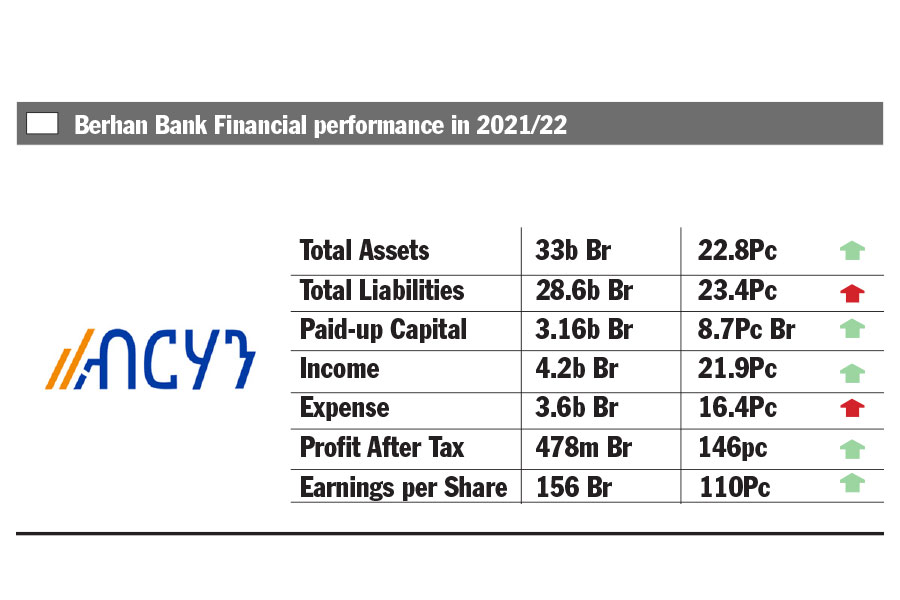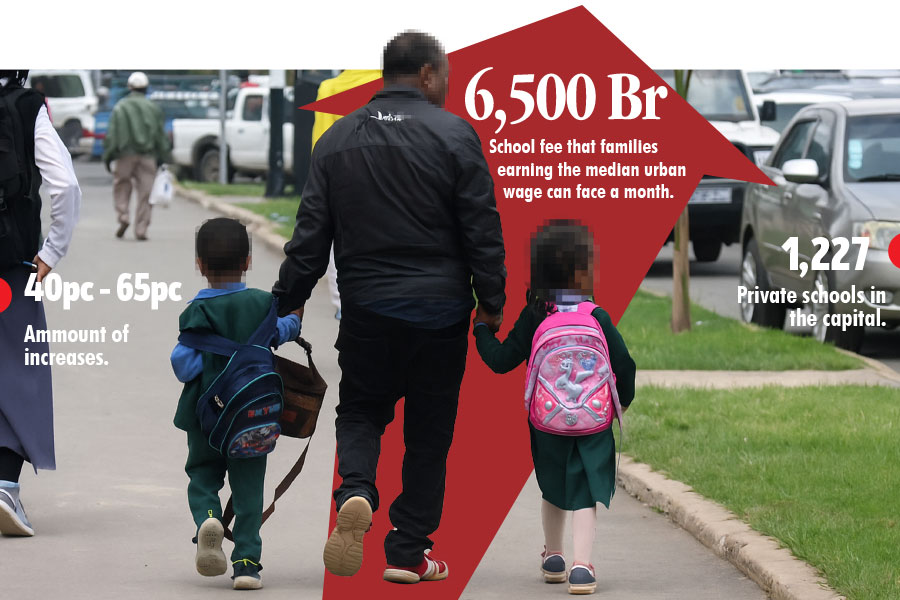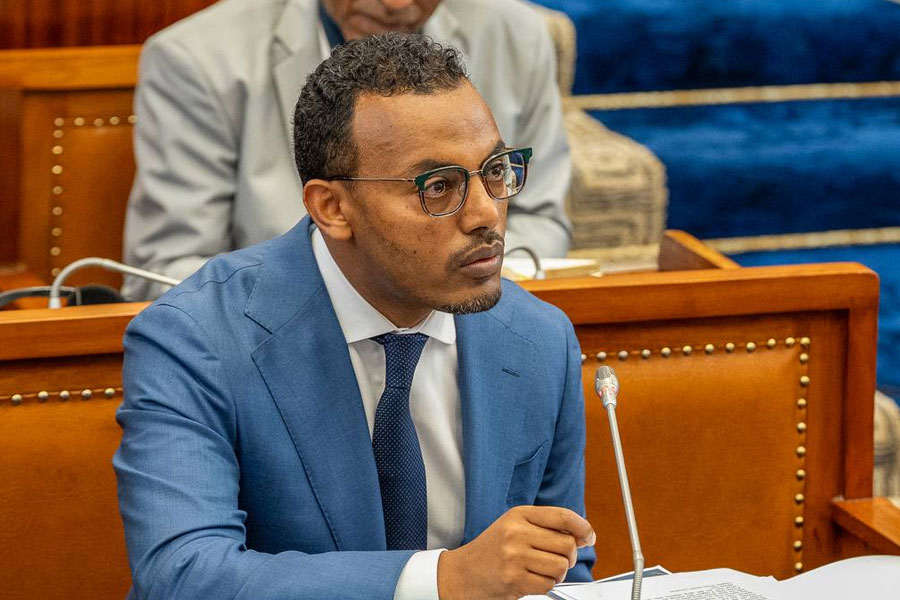
Sunday with Eden | Apr 25,2020
May 20 , 2023
By Bjorn Lomborg
The world faces many challenges, including the impacts of inflation and high-interest rates, the lingering effects of the COVID pandemic, and geopolitical conflicts such as Russia's invasion of Ukraine. Amid all this, this year marks the halftime point for the Sustainable Development Goals (SDGs)—the sprawling list of 169 ambitions in which all global leaders have promised everything to everyone.
Governments worldwide, including Ethiopia, have promised to end hunger, poverty and disease. They pledged to stop climate change, corruption and war while ensuring quality education and every other imaginable good, including organic apples and community gardens for everyone.
Not surprisingly, the world is failing on almost every single promise. We are at halftime but nowhere near halfway. We need to do better. We need a better conversation on priorities.
The Copenhagen Consensus Centre, a think-tank, has been working with governments worldwide, from Uganda to Tonga and Uzbekistan, to help the national spending decisions by researching which policies deliver the most considerable benefits for each Birr spent. The starting point is a national conversation on top priorities.
We also need to rescue the SDGs and end the global dithering. As resources are scarce everywhere, we must prioritize the best things first.
Unfortunately, many world leaders still believe the way forward is to come to the United Nations (UN) headquarters in New York later this year and make lofty speeches about how important it is to achieve every one of the promises before suggesting that only by aiming for the stars will we get anywhere.
But wishful thinking will not change the fact. There is no way we will deliver on all these promises in time. UN Secretary-General Antonio Guterres is now implausibly calling for a half trillion dollar annual SDG stimulus package. That is several times what rich countries are already spending on foreign aid. It is not going to happen.
Even if taxpayers globally could be convinced to pay the requested half a trillion dollars, this would still be 20 times too little. Achieving all the promises is estimated to cost around 15 trillion to 20 trillion dollars a year. Currently, less than a quarter is funded, and most of that spending is in rich countries, not the poor countries where development is needed the most.
This leaves an annual shortfall of 10 trillion to 15 trillion dollars, equivalent to the entire tax intake of 13 trillion dollars from every government in the world. That is a fiscal gap that cannot be closed.
We need to shift from empty rhetoric and trillion-dollar promises to real, efficient, billion-dollar action. It is time to focus our attention where it matters most.
The truth is that some promises do not have cost-effective, powerful solutions across the SDGs. Other promises have incredibly effective investments that can deliver remarkable progress for a few billion dollars annually.
Take the crucial SDG promise of improving education.
Research has consistently shown cheap and efficient ways to increase learning. Tablets with educational software used one hour a day over a year cost only 20 dollars for every student, resulting in learning that otherwise would take three years.
Semi-structured teaching plans can make teachers teach more efficiently, doubling learning outcomes each year for 10 dollars per student. We could dramatically improve education for almost half a billion primary school students in the world's poorer half for less than 10 billion dollars annually. This investment would generate long-term productivity increases worth 65 dollars for each dollar spent.
Or consider the SDG promise of reducing hunger. We need a second Green Revolution.
In the 1960s, breakthroughs created more efficient seeds that allowed farmers to produce more food at lower cost. Now, agriculture research and development are desperately needed for the world's poorer half. This spending would cut malnutrition, help farmers become more productive, and reduce food costs. Spending 5.5 billion dollars annually could deliver an incredible return of long-term benefits worth 184 billion dollars.
Simple measures to improve the conditions around childbirth could save the lives of 166,000 mothers and 1.2 million newborns every year for less than five billion dollars annually.
Economists working with the Copenhagen Consensus have identified 12 effective policies that would deliver enormous benefits across the SDGs at relatively low costs.
For a total of 35 billion dollars annually, we could do everything listed above. In addition, we could also avoid a million deaths from tuberculosis each year by 2030, improve land ownership records, boost trade, reduce malaria, enable more movement of skilled workers to reduce inequality, improve immunization levels, make significant inroads into child nutrition, and save 1.5 million lives from chronic diseases like hypertension.
These policies can save 4.2 million lives yearly, making the poorer world 1.1 trillion dollars more prosperous. Put in economic terms, every dollar spent will deliver 52 dollars of social benefits. Pursuing these phenomenal investments is likely the best thing the world can do in this decade.
We should begin a national conversation on priorities for countries like Ethiopia. And we should ensure the world has a similar discussion on its many promises. Let's rescue the SDG agenda and make the most of the remaining seven years. Let's prioritize what would deliver the most incredible benefits for the world.
PUBLISHED ON
May 20,2023 [ VOL
24 , NO
1203]


Sunday with Eden | Apr 25,2020

Radar | Dec 19,2021

Radar | Dec 02,2023

Fortune News | Nov 12,2022

Radar | Apr 26,2019

Radar | Jun 11,2024

View From Arada | Apr 04,2020

Radar | Jan 22,2022

Radar | Aug 13,2022

Radar | Jul 06,2019

My Opinion | 131507 Views | Aug 14,2021

My Opinion | 127863 Views | Aug 21,2021

My Opinion | 125841 Views | Sep 10,2021

My Opinion | 123471 Views | Aug 07,2021

Dec 22 , 2024 . By TIZITA SHEWAFERAW
Charged with transforming colossal state-owned enterprises into modern and competitiv...

Aug 18 , 2024 . By AKSAH ITALO
Although predictable Yonas Zerihun's job in the ride-hailing service is not immune to...

Jul 28 , 2024 . By TIZITA SHEWAFERAW
Unhabitual, perhaps too many, Samuel Gebreyohannes, 38, used to occasionally enjoy a couple of beers at breakfast. However, he recently swit...

Jul 13 , 2024 . By AKSAH ITALO
Investors who rely on tractors, trucks, and field vehicles for commuting, transporting commodities, and f...

Jun 28 , 2025
Meseret Damtie, the assertive auditor general, has never been shy about naming names...

Jun 21 , 2025
A well-worn adage says, “Budget is not destiny, but it is direction.” Examining t...

Jun 14 , 2025
Yet again, the Horn of Africa is bracing for trouble. A region already frayed by wars...

Jun 7 , 2025
Few promises shine brighter in Addis Abeba than the pledge of a roof for every family...

Jun 29 , 2025
Addis Abeba's first rains have coincided with a sweeping rise in private school tuition, prompting the city's education...

Jun 29 , 2025 . By BEZAWIT HULUAGER
Central Bank Governor Mamo Mihretu claimed a bold reconfiguration of monetary policy...

Jun 29 , 2025 . By BEZAWIT HULUAGER
The federal government is betting on a sweeping overhaul of the driver licensing regi...

Jun 29 , 2025 . By NAHOM AYELE
Gadaa Bank has listed 1.2 million shares on the Ethiopian Securities Exchange (ESX),...